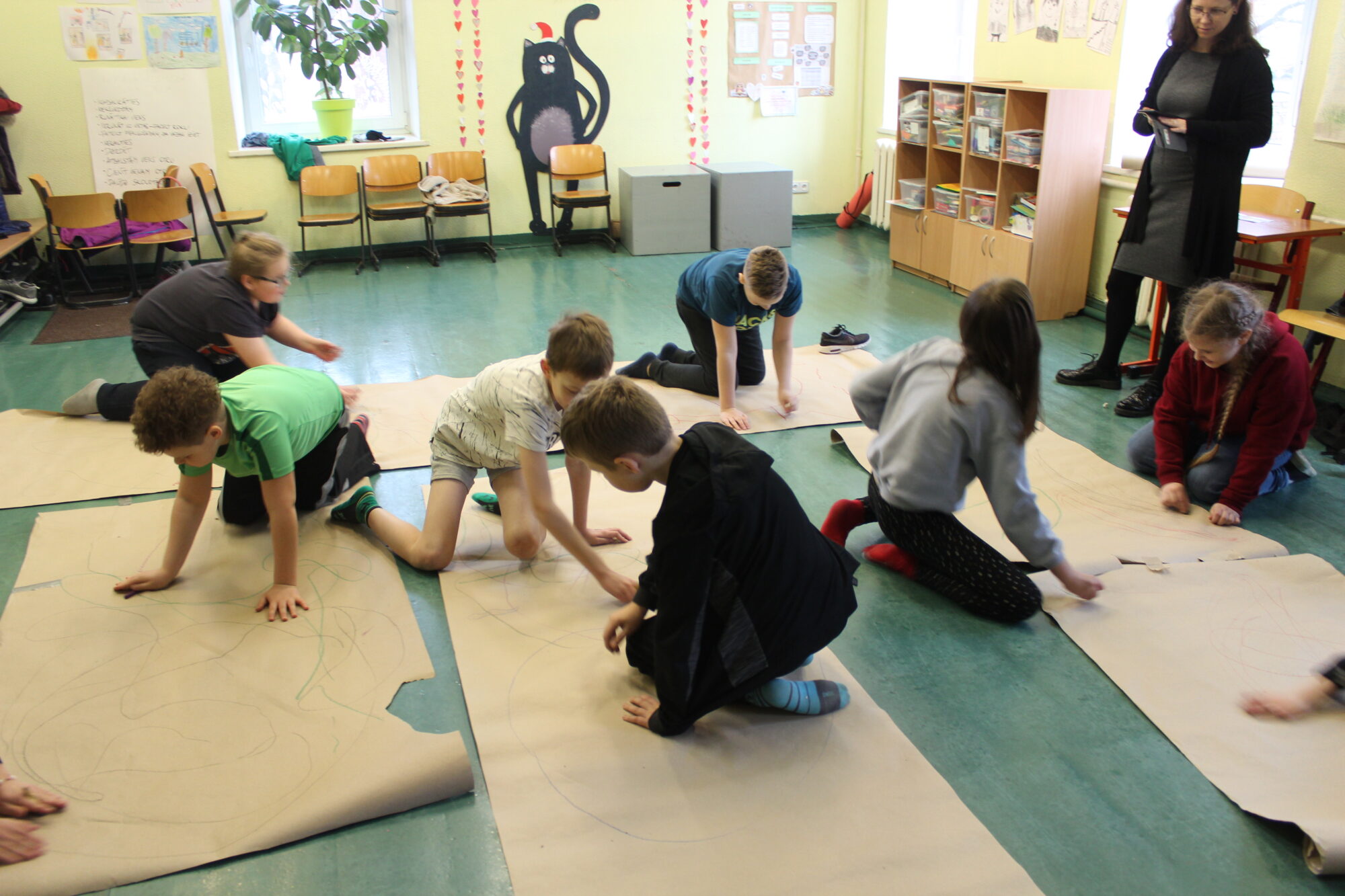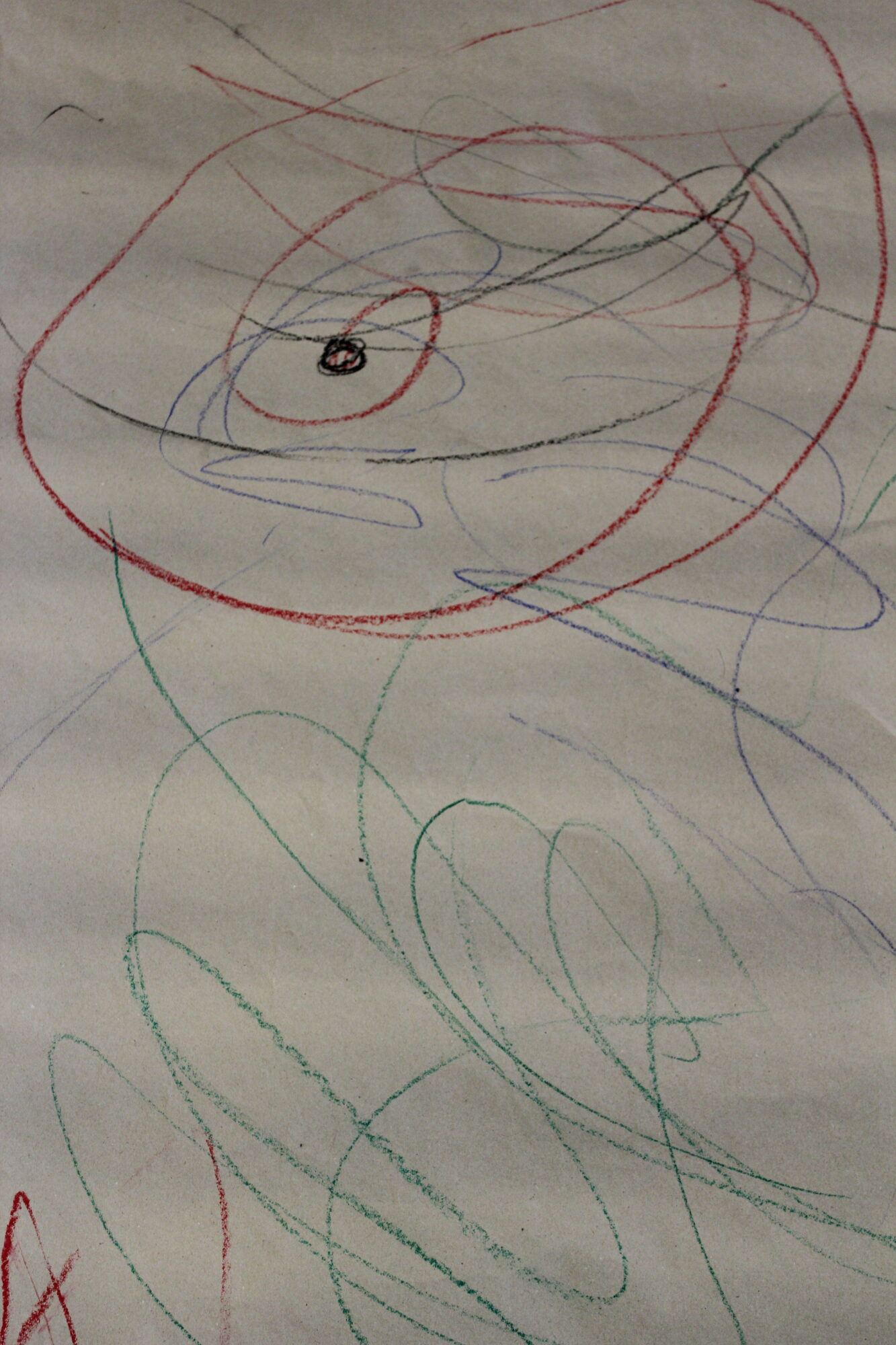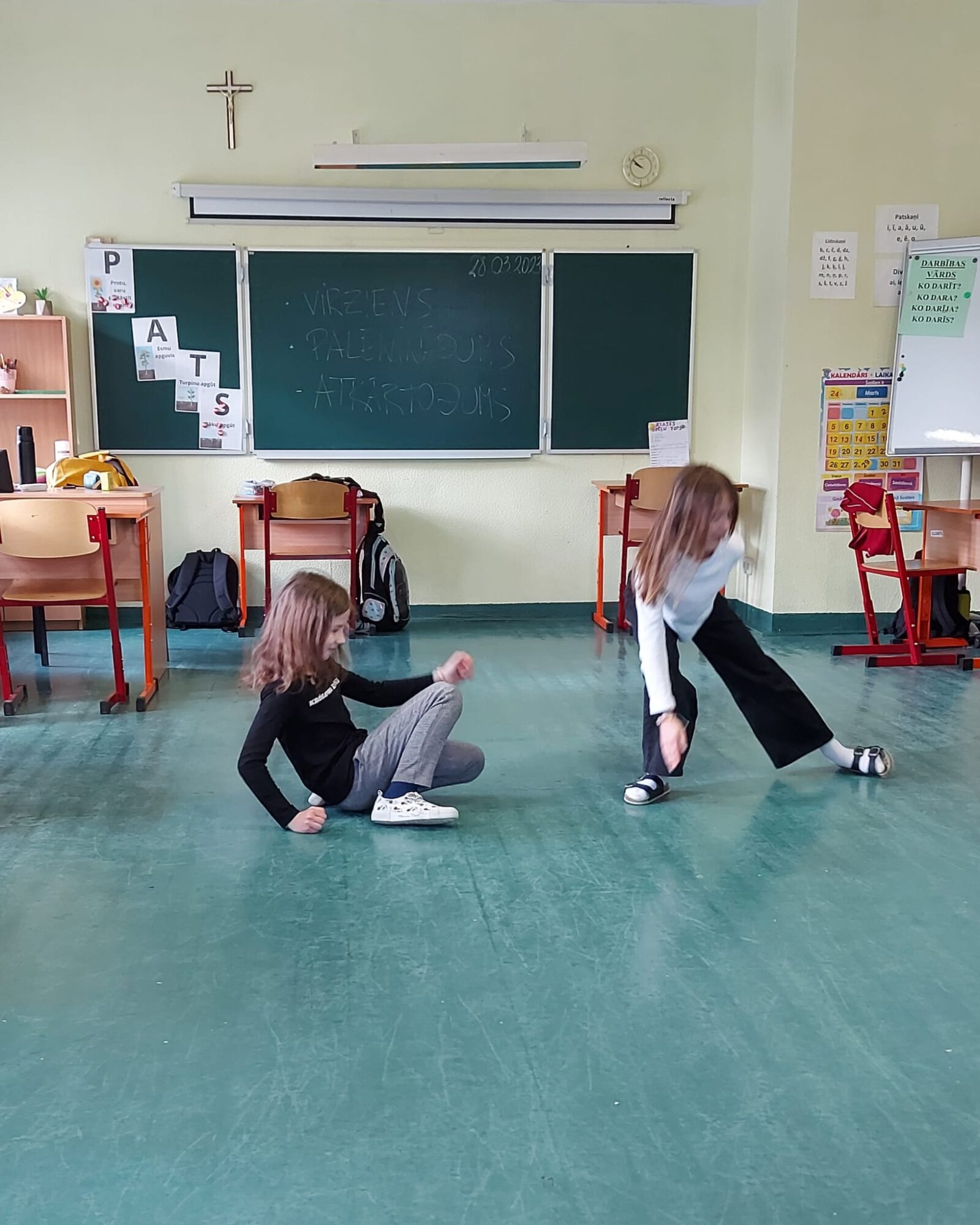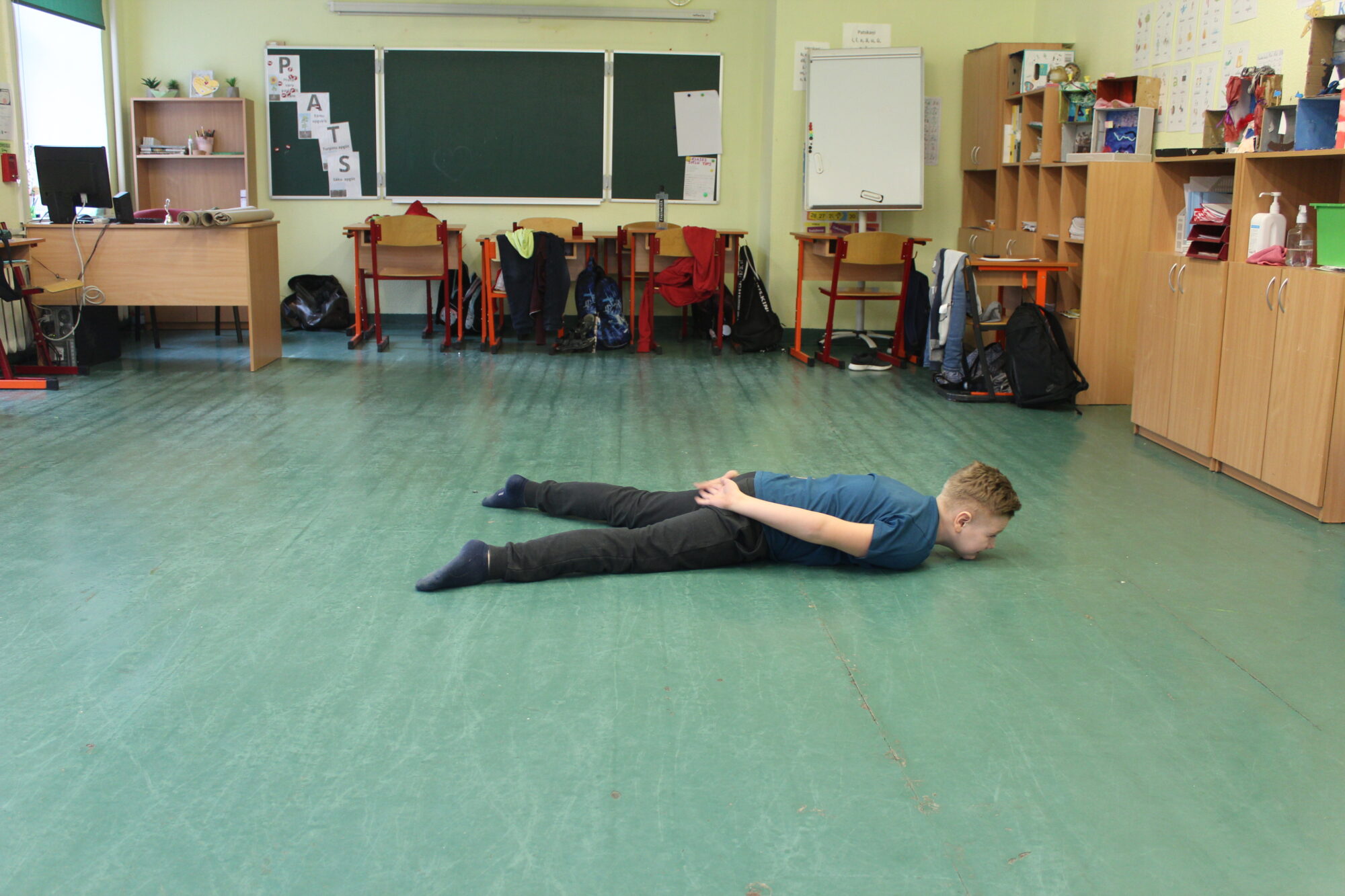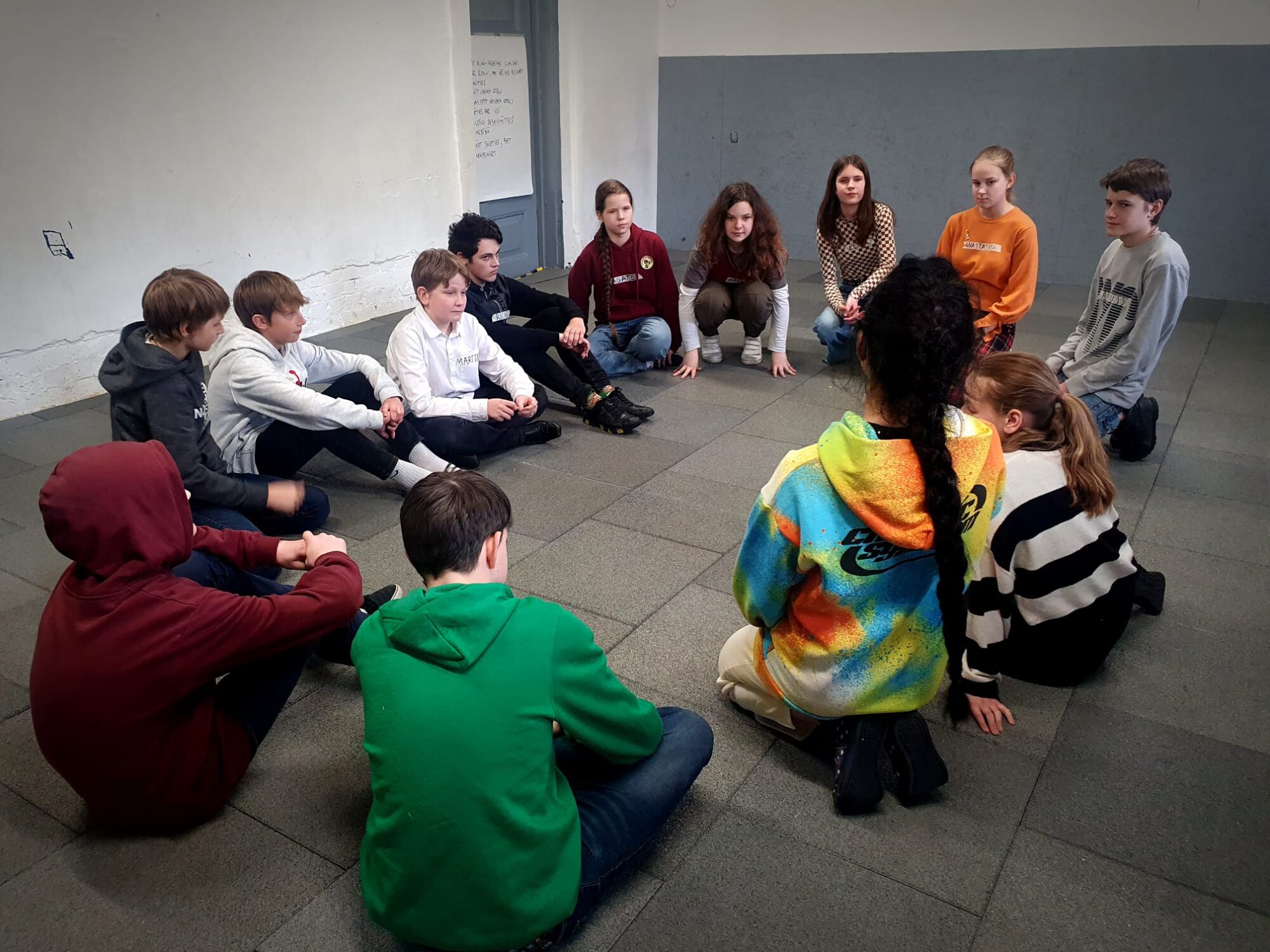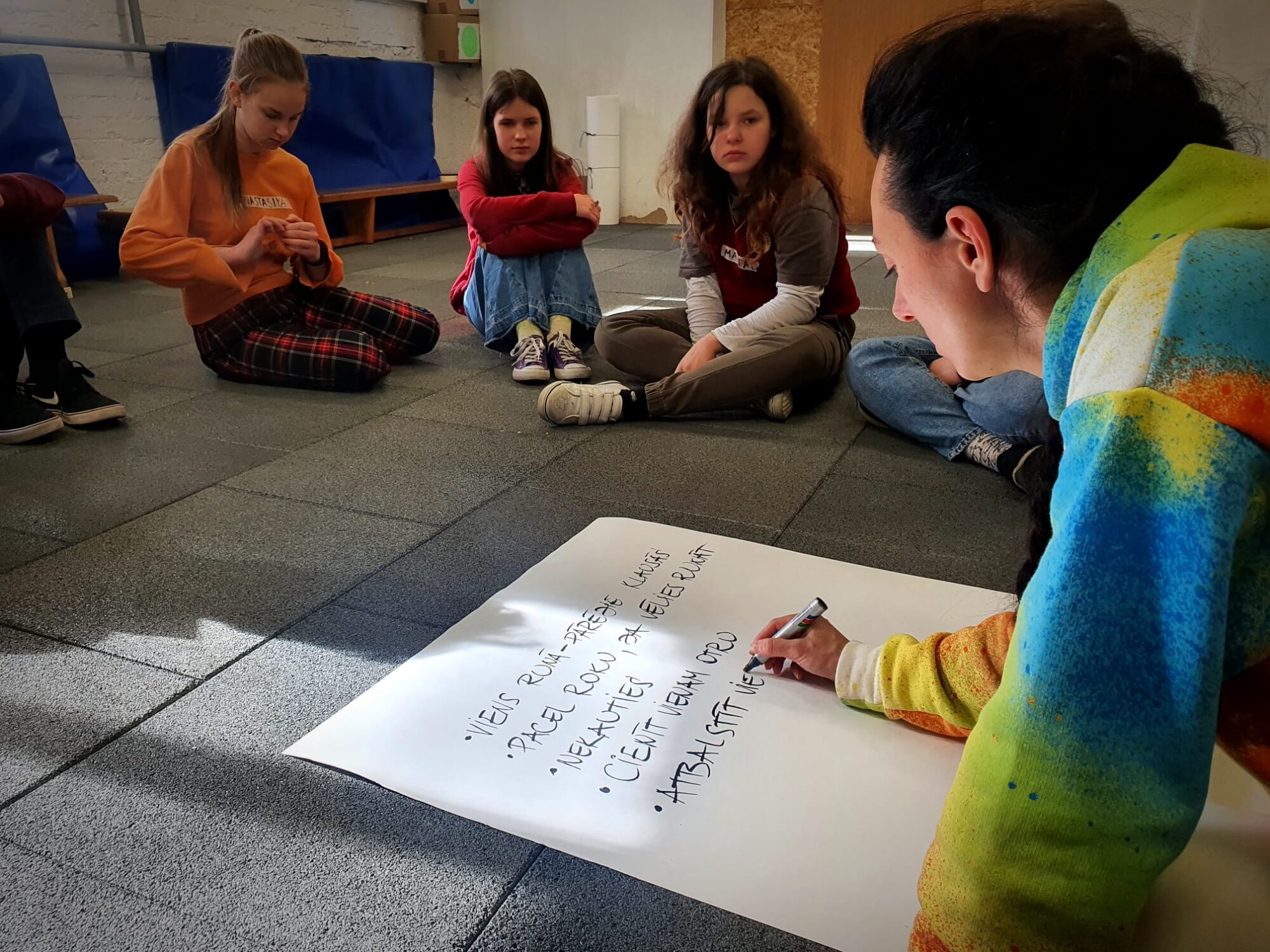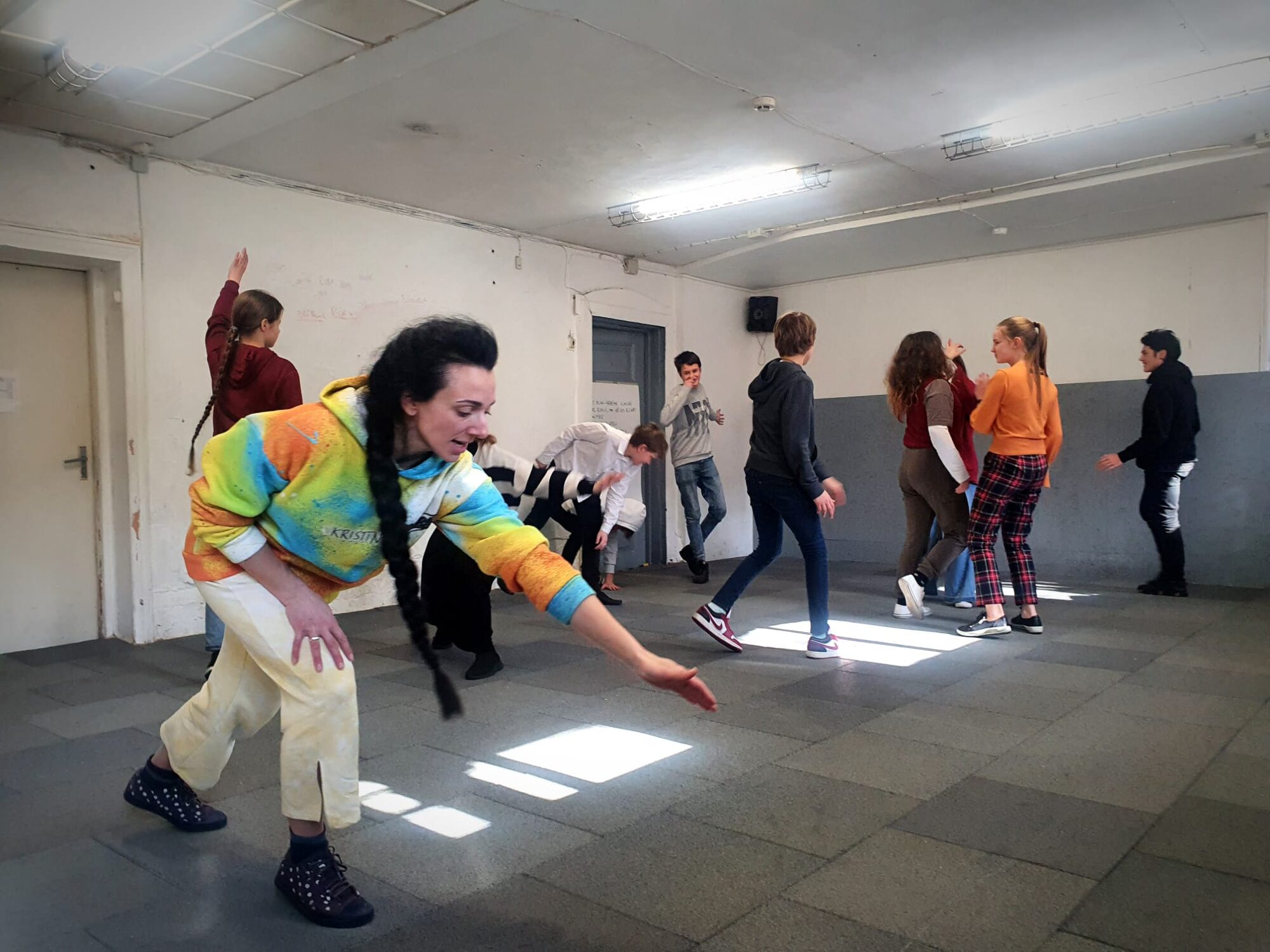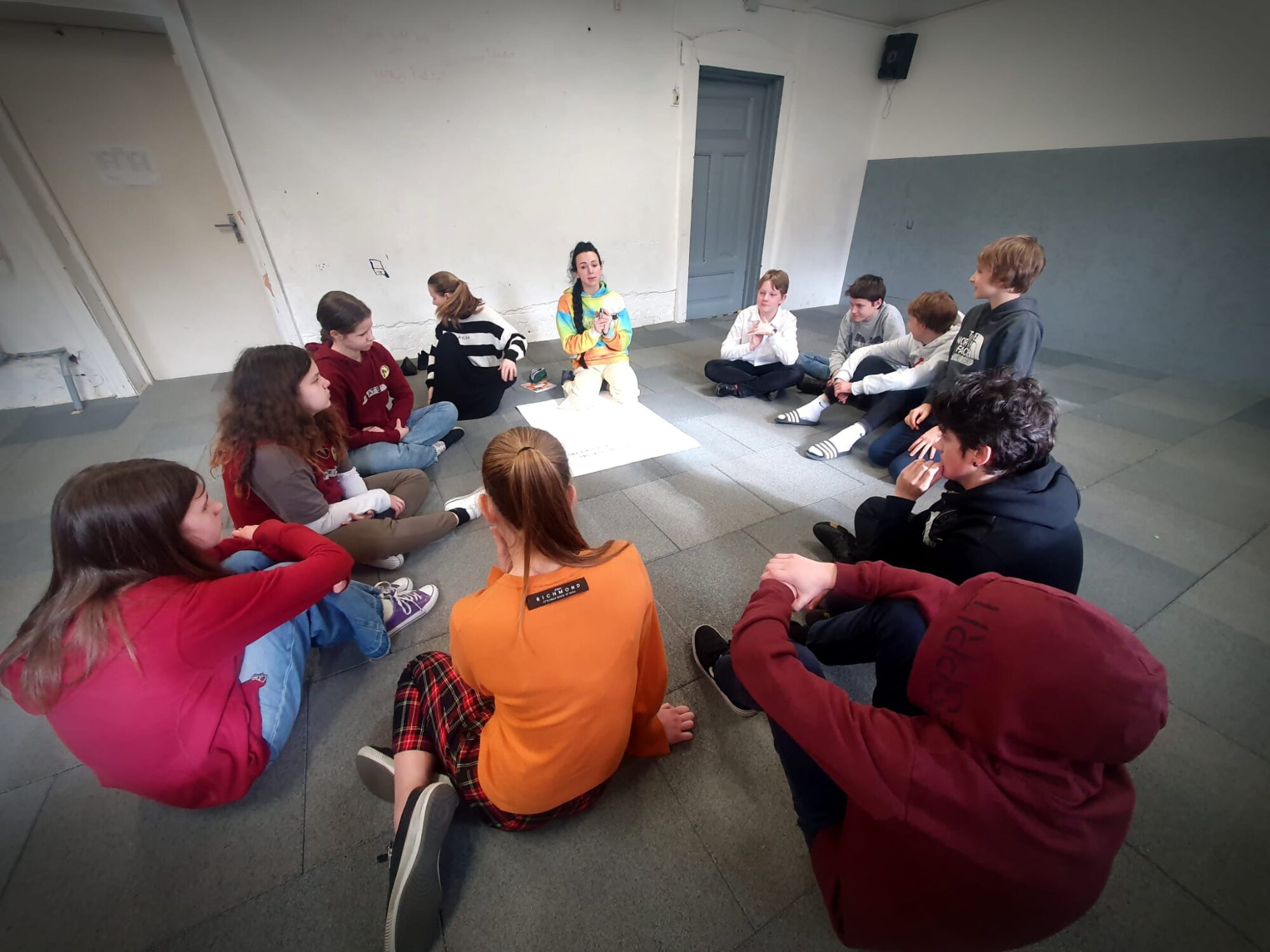April 24, 2023
Draw with the body. Movement artist Kristīne Brīniņa on her sensitive connection with the pupils of Liepāja Catholic Primary School

The project “The Artist is Present – Contemporary Art Residencies in Schools” is moving forward with deliberate, delicate steps. Today we present a special look back at the artist residencies, in which movement artist Kristīne Brīniņa shares her sensitive, nuanced reflections on the connections she has made with the pupils of Liepāja Catholic Primary School. She recalls:
“In my first lesson, a 3rd grader asked me, ‘Where did I learn to draw? I answered that I didn’t know how to draw. I was puzzled – what kind of artist am I if I can’t draw? I answered philosophically – I draw with my body.
The theme “Drawing/painting with the body” has become a fundamental tool with which we explore the visible and imaginary imprints of movement in space. Children are encouraged to imagine certain parts of the body as drawing or painting tools that can be used to draw lines in different planes – on the floor, on the ceiling, in cross-sections of the room, on the walls, etc. To help us imagine the invisible lines that movement can leave in a space, we have drawn through movement with crayons on sheets spread on the floor or placed on the body, or on any other surface. The children danced the movement on the paper without the aim of drawing, the lines forming as a result of the dance. Together we came to the realisation that dancing can create abstract drawings in which certain images can be recognised. In our case, a person was found.
The children seem to have got used to my presence and our lessons have become part of the school rhythm. In the process, the concept of boredom has emerged. I have been waiting for this moment so that we can think practically how to discover something new in a known case. This is where the exploration began – is this really all that can be done with this one tool? How to keep curiosity alive and give creativity and imagination a chance to overcome boredom? How to build a deeper relationship with the known, searching for the undiscovered? In general, groups of students are very different in terms of their overall dynamics and relationships. The pupils in Year 3 are playful, cohesive and secure. The internal climate of Year 7 is fragile. I have existential and sensitive issues. In the adolescent group, one can observe exactly what the psychologist told us artists in the seminar: at adolescence, students who are different are at risk of becoming victims in the classroom. Liepāja Catholic Primary School is one of the few schools in Latvia that allows different children to learn together – there are children with hearing difficulties, speech difficulties, autistic spectrum, in wheelchairs. In the adolescent group, there was a seemingly innocent aggression among some individuals towards the different, while in the 3rd grade, different children get along amicably, including assistants, in our case the mother of a child in a wheelchair, who helps her son in the learning process. Seeing what is happening makes us want to react, talking through the artistic process about empathy, the inner and group strength that comes from supporting and understanding each other. And here the questions come. Is the intervention in the inner climate of the group the aim of our project and to what extent? Is the project “The Artist is Present” educational or social? Or both? I’d like to think both. After meeting young people, violence and equality are words that have taken root. Do young people understand the line when equality is threatened? Do they recognise the moment when they themselves become violent? Do they recognise when they themselves are being abused and how this affects their actions? How can the artistic process initiate a healthy inner climate for adolescents to create a better environment and future for themselves? In one of the meetings with the partners of this project “The Artist is Present”, the Norwegian artist collective “Tenthaus”, the idea that it is important for children to contribute to the world and to start with themselves, came up in their project. I have also kept the advice from this conversation that it is not about looking for answers, it is about finding the right question that triggers thoughts and feelings. Each session with the two classes is opened and closed with a circle talk. The circle talks help to understand the dynamics of the day, the overall mood. It also helps to identify where we are as a group in the overall creative process and to articulate the benefits. What I take for granted as a dance artist, for children whose daily life is not creating and exploring movement, what happens in class is a much more capacious experience than I would have imagined. When the author of the project, Māra Žeikare, asked the children what it is that we do, what we like, what we don’t like, while participating in one of the classes as an observer, the children answered: we imagine; we fill the space with ourselves; we have the opportunity to be ourselves; we talk without words; we don’t like being shy. Conversations help to build trust and get to know the children better during the limited project period.
Working with teenagers and children, I experience a real emotional journey. Children are fantastic – they are direct, shy, bravura, hard-working, witty, playful, fearful, inspired, enthusiastic, suspicious, defiant, cautious. It takes time to earn trust, where creativity can become personal, self-revealing and transformative.
I am also lucky to have teachers who are present in all the sessions. You can see that the children also really appreciate their teachers – they are undeniably the children’s confidants. I feel free to discuss and debate with the teachers what is going on, also in terms of my way of conducting the workshops – if we have different visions, we discuss that too, looking for the best ways of working with the children. Both teachers assist delicately in the lesson, using the terms I suggest, paraphrasing what the children say, making parables, thus deepening the understanding of what they are experiencing.
Little by little we are getting closer to what the children would like to convey at Survival Kit in the autumn. It will most likely be a synergy between the children’s topic and my observations.”

